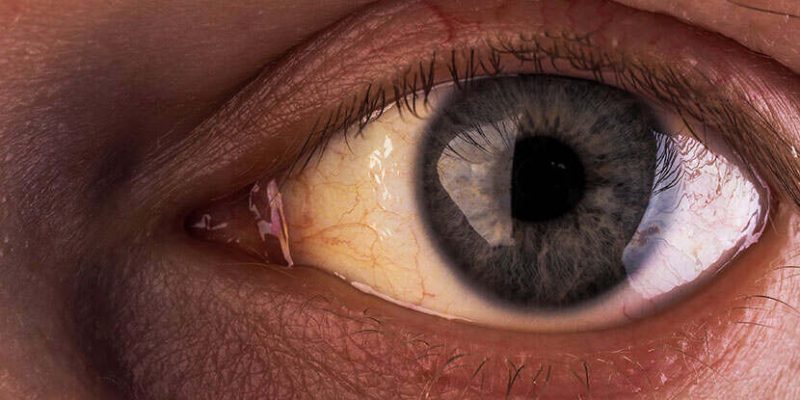Why Are the Whites of My Eyes Discolored?
By Reena Mukamal on Mar. 09, 2022 for the American Academy of Ophthalmology
The white part of the eye, called the sclera, is a protective layer that covers more than 80% of the eyeball’s surface. A healthy sclera is white. But what does it mean when the sclera takes on a different hue?
If your whites become yellow, like Michael Jordan’s eyes in ‘The Last Dance,’ or otherwise discolored, consult with your ophthalmologist. In some cases, this could signal an underlying health condition.
Here are a few colors your sclera might turn, and possible reasons why.
What does it mean if the whites of your eyes turn yellow?
A small patch of yellow tissue that bulges out of the conjunctiva — the transparent film covering the sclera — could be a pinguecula. This is caused by ultraviolet damage from the sun combined with damage from wind or dust. Sometimes these patches can get inflamed and appear reddish. Left untreated, a pinguecula can develop into pterygium, also called “surfer’s eye”. This is a larger, wedge-shaped growth that can expand to the cornea and block vision.
If the entire sclera turns yellow, it is often a sign of jaundice. Jaundice is caused by a buildup of old red blood cells, called bilirubin. These cells are normally filtered out by the liver and turned into bile. That bile is stored in the gallbladder and eventually excreted by the body. But when the liver, gallbladder or pancreas are not working properly, jaundice can develop. It’s important to contact your primary care doctor right away if you notice your entire sclera turn yellow.
Why are the whites of my eyes brown?
In African Americans, the sclera can have brownish spots or splotches due to high levels of the dark brown pigment called melanin. This is harmless. Other times, a brown spot is a nevus or freckle on the eye.
Sometimes, brown spots are more serious. A precancerous condition called primary acquired melanosis (PAM) starts with a painless flat brown spot on the eye. This spot resembles a freckle and changes slowly over time. It typically develops in middle-aged people, and appears in one eye. Left untreated, PAM can become cancerous and life-threatening. Ask your ophthalmologist to take a look at any new brown spots on your eye.
What’s that red or pink spot on your eye?
Redness in the eye can be caused by many conditions or injuries. It’s important to get redness checked by an ophthalmologist right away, especially if it’s accompanied by blurry vision, pain or discharge.
A bright red spot on the white of your eye is typically a sign of a subconjunctival hemorrhage. This is a broken blood vessel that has leaked between the sclera and the conjunctiva just underneath the white of your eye. The blood spot can look scary but is usually harmless and often heals on its own.
If your eyes are bloodshot, that is usually caused by a dilation of the microscopic blood vessels in the conjunctiva. Bloodshot eyes often occur when you are tired, experiencing allergies or dry eyes, have been around smoke or develop irritation from contact lenses. An eye infection like conjunctivitis (pink eye) can also make your eyes appear bloodshot.
In some cases, red eyes signal a more serious eye problem or disease, such as uveitis or glaucoma.
Some medicines can make the whites of your eye turn blue or grey
A blue-grey tint in the sclera can occur after long-term use of certain medications. Minocycline, an antibiotic that is used to treat rosacea and sometimes rheumatoid arthritis, can have this effect over time. This medicine can also cause the skin, ears, teeth or fingernails to appear blue-grey.
Sometimes the sclera can become thinner than normal and allow the tissue beneath, called the choroid, to peek through. This can create a bluish discoloration. This can affect people born with osteogenesis imperfecta (brittle bone disease) or Marfan’s syndrome (a connective tissue disorder). A thin sclera can also develop in people with iron deficiency or anemia. Your ophthalmologist will refer you to a specialist as needed.

